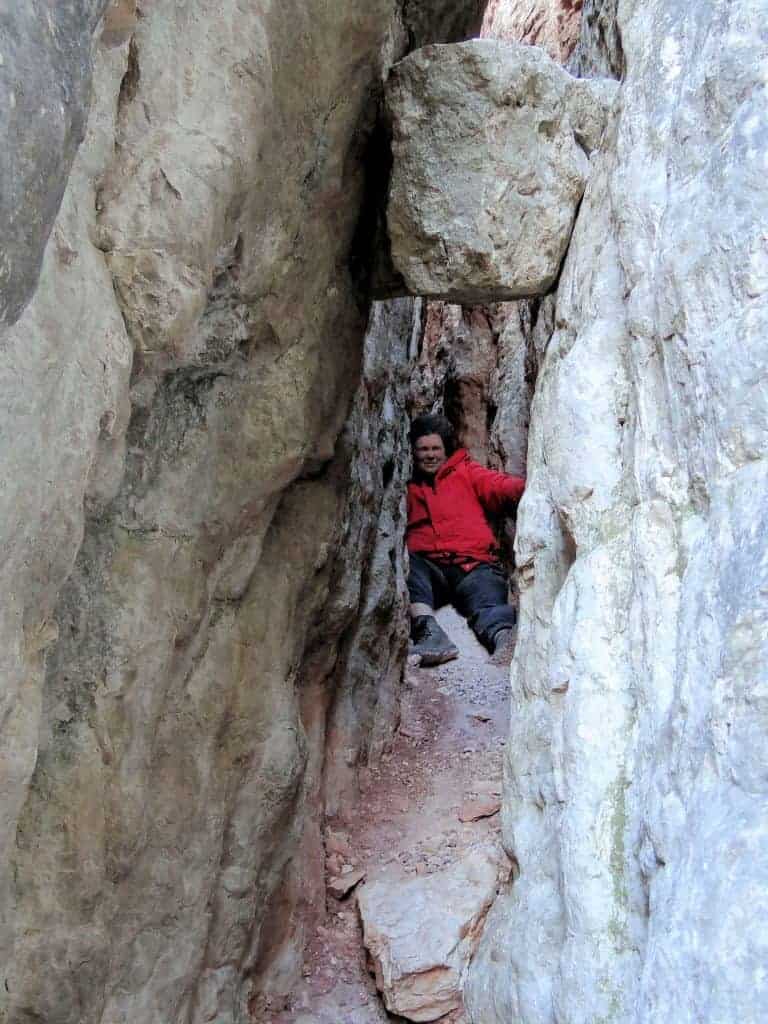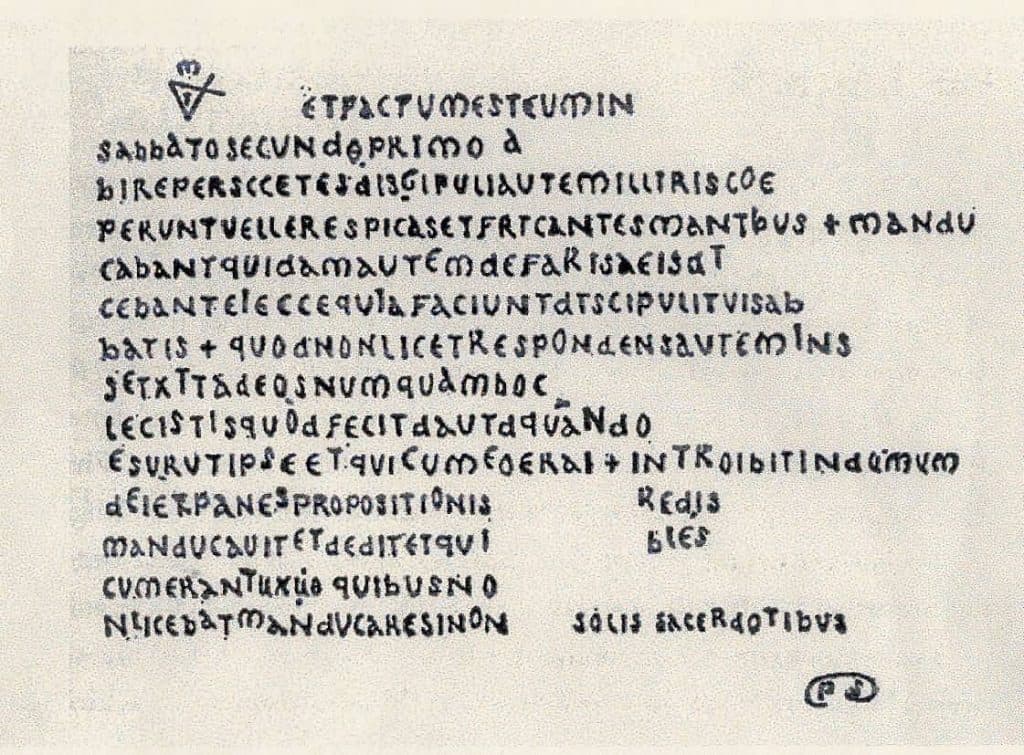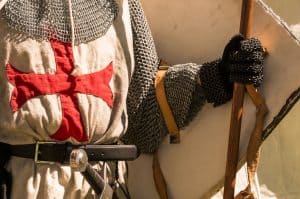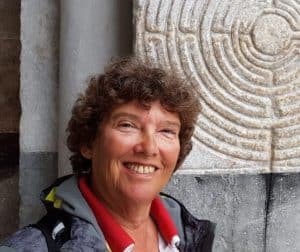About 40 kilometers south of Carcassonne, on the D52 (a side road of the D118), the town of Rennes le Château looms. At first glance, it appears to be an uninteresting village on a hilltop. However, as soon as you enter the village, you will see the strange sign “Les Fouilles sont interdites” “Excavations are forbidden.”
What is the Mystery of Rennes-le-Château?
The mystery of Rennes-le-Château is a story about a village priest, Bérènger Saunière, who suddenly had a lot of money at his disposal. Many theories have arisen around this money’s origin, ranging from finding a treasure to extorting the Catholic Church.
Now, let’s find out if this is a myth, or could it be serious?
Bérengèr Saunière - the wealthy priest
He started as a normal priest in a poor little village, but ended up being a mystery. Somehow, he managed to gather sufficient resources to renovate the church. He bought plots of land and, for unknown reasons, put them in his housekeeper’s name.
He built a villa, laid out a unique garden, and provided it with a wall (rampart) as if it were a castle. Furthermore, he had a tower built at the end of the wall, which served as a library. On the other end of the wall, he built a greenhouse for his exotic plants.
In the meantime, he received guests and poured the tastiest wines and a special cognac.
Bérenger Saunière lived in abundance at a time when many of his colleagues could barely make ends meet.
One of his guests was Johan Salvator of Habsbourg. This is reported by the local historian, Pierre Jarnac. The unexpected arrival of this noble personality had been recorded by the police in Couiza and can be found in the local archive.
A Mystery during his Lifetime
The origin of Bérenger Saunière’s wealth was already a mystery during his lifetime. It seems that the diocese initially protected him. Apparently, Saunière had a good relationship with the bishop of Carcassonne, Monsignor Billard. However, when Billard died in 1901 and was succeeded by Monsignor Beauséjour, the protection of the diocese was over.
Saunière was summoned by Beauséjour to explain his finances. In the end, Saunière was convicted of unlawful mass trafficking and disobedience to the bishop. An announcement in all media warned people against purchasing Holy masses from Saunière.

The conflict between him and the diocese intensified. Saunière even attempted to establish his credibility by the pope himself in Rome. In the end, Saunière loses and is transferred to another parish. He declined and offered to retire. This allowed him to continue living in Rennes-le-Château.
In January 1917, he suffered a stroke, which led to his death on January 22. His property is inherited by his maid, Marie Dénarnaud. This was of little service to her, however. She was compelled to sell everything since she could not afford to maintain it without any money.
Noël Corbu makes the mystery bigger
The new owner was Noël Corbu. Marie was allowed to stay on the property and lived with the Corbu family, whose children considered her as a kind of grandmother. Marie had promised to tell Corbu the secret of the pastor’s wealth, but she died in 1953 without being able to confide in him. Thus was born the mystery of the treasure of Rennes-le-Château.
Noël Corbu turned the domain into a hotel and welcomed the guests with the story of a mysterious treasure found by the village priest. In 1956, a local journalist wrote a sensational story about the pastor’s treasure.
Treasure Hunters

After these stories were published, the first treasure hunters arrived in Rennes le Château. They did not always act cautiously. They excavated the town and even used explosives to locate the treasure.
Eventually, the excavations were banned. The sign at the beginning of the village is there for a reason.
Pierre Plantard
Pierre Plantard was one of the early treasure hunters. He even bought plots of land in the vicinity of Rennes le Château and made many discoveries over the years. He was often in the area and developed all kinds of theories about the priest’s wealth.
Pierre Plantard (1920-2000) founded his first fake organization at seventeen. At the time, he believed in a conspiracy between Freemasons and Jews to undermine France (incidentally, he became a Freemason himself in 1951). In 1956, shortly after the publication of the treasure of Saunière in La Depêche du Midi, he founded the priory of Sion.
In 1962 Plantard and Gerard De Sède wrote the book, Les Templiers sont parmi nous (The Templars are among us). This book describes the Priory of Sion, apparently originally founded in 1090, as a secret division of the Knights Templar.
In 1967, De Sède published L’Or de Rennes, later republished under Le Tresor Maudit de Rennes-le-Château (The Accursed Treasure of Rennes-le-Château).
Mysterious parchments
In the last book, De Sède writes that Sauniére found several coded parchments during the church’s restoration. These clues led him to the location of the treasure.
The parchments had coded Bible quotes on them. For example, the shortest parchment refers to Luke 6:1-5 (Jesus and the Sabbath). Some letters are positioned higher than others, and the following sentence can be formed by placing the letters in the correct order after each other:
A DAGOBERT II ROI ET A SION EST CE TRESOR ET IL EST LA MORT
(FROM DAGOBERT II, KING AND OF SION IS THIS TREASURE, AND HE (IT) IS DEATH).
The other Bible quote refers to John 11 (The Resurrection of Lazarus). This code was a lot harder to decipher. The solution read:
BERGERE PAS DE TENTATION QUE POUSSIN TENDERS GARDENS LA CLEF PAX 681 PAR LA CROIX ET CE CHEVAL DE DIEU J’ACHEVE CE DAEMON DE GARDIEN A MIDI POMMES BLEUES
(SHEPHERDESS, NO TEMPTATION, OF WHICH POUSSIN (and) TENDERS GUARD THE KEY. PEACE (of) 681. THROUGH THE CROSS AND THE HORSE OF GOD I REACH THE DEMONIC WATCHMAN AT NOON (or: in the SOUTH). BLUE APPLES).
Clearly, the deciphered messages remained mysterious!
The Mystery becomes World News
The journalist, Henri Lincoln, bought de Sède’s book in 1969. He was immediately captivated by the story, perhaps in the first place, because he deciphered the code on the little sheet relatively easily.
Lincoln worked for the BBC and suggested dedicating a documentary to this subject.
He met De Sède and got more and more information about the mystery. Finally, he and numerous other researchers dove headfirst into a labyrinth of interwoven webs.

The result was documented in the best-selling book The Holy Blood and the Holy Grail.
Thanks to this book, many people, including myself, fell under the spell of the secret of Rennes-le-Château. The mysterious new character introduced in the book was Pierre Plantard, the treasure hunter I talked about earlier.
The Holy Blood and the Holy Grail
The writers of The Holy Blood and the Holy Grail propose that Jesus married Mary Magdalene, had one or more children and that their ancestors relocated to southern France. They intermarried with aristocratic families who would form the Merovingian dynasty, whose claim to the French crown was defended by the Priory of Sion.
The Holy Grail is Mary Magdalene’s womb and the royal lineage she bore.
Although there are big doubts about the Priory of Sion, this is a remarkable book, which should be in every bookcase of a Rennes-le-Château researcher.
The Da Vinci Code
When Dan Brown uses the plot of The Holy Blood and the Holy Grail for the Da Vinci Code, Rennes-le-Château becomes a tourist attraction. In the meantime, Lincoln distanced himself from the contents of his book, but the other writers (Baigent and Leigh) sued Dan Brown for plagiarism.
The mystery intensifies as many researchers dive into the origins of Dan Brown’s novel. Finally, it became evident that Pierre Plantard, who had primarily manufactured the data he had presented himself, had cleverly manipulated the authors of The Holy Blood and the Holy Grail.
Mystery solved?
One could say that the mystery turned out to be a myth, but nothing could be further from the truth. An accomplice of Pierre Plantard, Philipe de Cherisey, stated that he was responsible for the coding of one of the parchments.
He explained the procedure in 2010 in a book by Jean Luc Chaumeil. Chaumeil was asked by de Cherisey to publish this book 25 years after his death.
With this explanation, a new mystery was born! De Cherisey’s story turns out not to be entirely correct.
He stated that the Biblical text of the large parchment was composed of various gospels (as we all thought at that time), but a German researcher, Wieland Wilker, had discovered in 2006 that the text of the parchment was taken in full from the Codex Bezae Cantabrigiensis, a 5th-century Greco-Roman bilingual biblical text (with Greek and Latin pages facing each other).

Today's mystery of Rennes-le-Château
Meanwhile, new investigators of the mystery of Rennes-le-Château tried to trace the mystery back to where it all started. What is the secret of Rennes-le-Château? How did Saunière really make his money? Did he really earn his money from mass trafficking, and was the diocese right all along? But how did it work? Why could he become rich while other priests (who did the same thing) could not?
Or would his wealth have to do with something he found renovated the church? Was there perhaps a treasure hidden in the crypt? Perhaps a treasure concealed by a former priest during the French Revolution on behalf of the owners of the castle adjacent to the church?
Maria Magdalena in Rennes-le-Château
While some researchers examine historical records about the history of Rennes-le-Château, others pursue a link with Mary Magdalene.
Rennes-le-Château’s church is all about Mary Magdalene. You will see her at the altar, and on the stained-glass windows. Saunière named the magnificent home he had constructed Villa Bethany. Bethany is referenced in the Bible as Mary Magdalene’s place of residence. The tower in which he housed his library was named Tour Magdala, a reference to her name.

Spiritual researchers believe that Rennes-le-Château played a role in the story of Mary Magdalene. Mary Magdalene is said to have fled to France. According to the “official legend” she died and was buried in Saint-Maximin-la-Sainte-Baume.
Now there is a whole new legend: she died and was buried in the vicinity of Rennes-le-Château! With the right guide, you can even visit the cave where she supposedly lived.
Jesus did not die on the cross!
What if Saunière found the Jesus’ tomb and blackmailed the church with it? The Christian religion would be severely shaken by this. Saunière would have discovered that the entire tale surrounding the crucifixion was false. Jesus who had come back from the dead and ascended to heaven was actually buried in the vicinity of Rennes-le-Château.
Some researchers are sure that this region has something special and that it has to do with an ecclesiastical secret that should remain hidden.
The storage place of the Holy Grail
While the authors of The Holy Blood and the Holy Grail believed that the Grail represented the bloodline of Jesus and Mary Magdalene, other researchers believe that the Grail or the Ark are concealed in this region.
They believe that this object was moved to this region by the Templars.
Saunière had found this secret hiding place and used this knowledge to his advantage.
Lincoln's new theory
Lincoln was so captivated by the mystery that he moved near Rennes-le-Chateau. He could regularly be found in the presbytery garden showing maps of the surroundings. According to him, the surrounding mountains form a sizeable megalithic temple complex. This sanctuary, the eighth wonder of the world, was discovered by Saunière. You can read about it in Lincoln’s book, The Holy Place.
UFOs, ancient civilizations, and mysterious passages
For decades, people are trying to find an explanation for the priests’ wealth. Until recently, books were published almost every year with new clues to Saunière’s treasure.
Most stories are bizarre, and sometimes an investigator is caught in his lies. This happened to Ben Hammott a couple of years ago. His movie of the grave of Mary Magdalene, he had supposedly found in the area, was shot in his own garage.
Field research around Rennes-le-Château
My great hobby was to delve into books about this area and investigate with fellow researchers to see if we could find evidence for the author’s theories. My own take on the mystery is that a former priest, Antoine Bigou (1719-1794) hid valuables of the family Hautpoul de Blanchefort in the church. This noble family owned the castle in Rennes-le-Château during the French Revolution. I think Saunière found this treasure while restoring the church.
I visited Rennes-le-Château and its surroundings many times with some fellow researches. We found something new every year. Mysterious crosses on stones, ancient quarries, caves, underground passages, dolmens, and strange carvings.

Doing research in the Rennes-le-château area is like playing the leading role in your own boys’ book, we often said.
Unfortunately, I am now too old to continue these adventures on location. Nowadays, I like to leave the research to others, but I am still fascinated by the subject.
Places to stay
If you wish to stay in that area, please consider Au Coeur de Rennes in Rennes-les-Bains. I have stayed there during many Christmas Holidays and really enjoyed it.
But you can also use Booking.com. Just fill in the dates on the map below to see what is available. Maybe you have to Zoom out a bit, to find more options.
If you have kids, try staying at Carcassonne, a wonderful small city, that will send you back directly to the medieval times.











